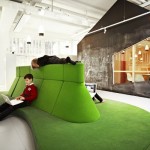http://facultyrow.com/video/where-good-ideas-come-from
The Genius of the Tinkerer – The secret to innovation is combining odds and ends
… ideas are works of bricolage. They are, almost inevitably, networks of other ideas. We take the ideas we’ve inherited or stumbled across, and we jigger them together into some new shape.
Adjacent possible
Stuart Kauffman – the adjacent possible – the linkage between and among first order combinations. The phrase captures both the limits and the creative potential of change and innovation. The adjacent possible is a kind of shadow future, hovering on the edges of the present state of things, a map of all the ways in which the present can reinvent itself.
The strange and beautiful truth about the adjacent possible is that its boundaries grow as you explore them. Each new combination opens up the possibility of other new combinations. Think of it as a house that magically expands with each door you open. You begin in a room with four doors, each leading to a new room that you haven’t visited yet. Once you open one of those doors and stroll into that room, three new doors appear, each leading to a brand-new room that you couldn’t have reached from your original starting point. Keep opening new doors and eventually you’ll have built a palace.

